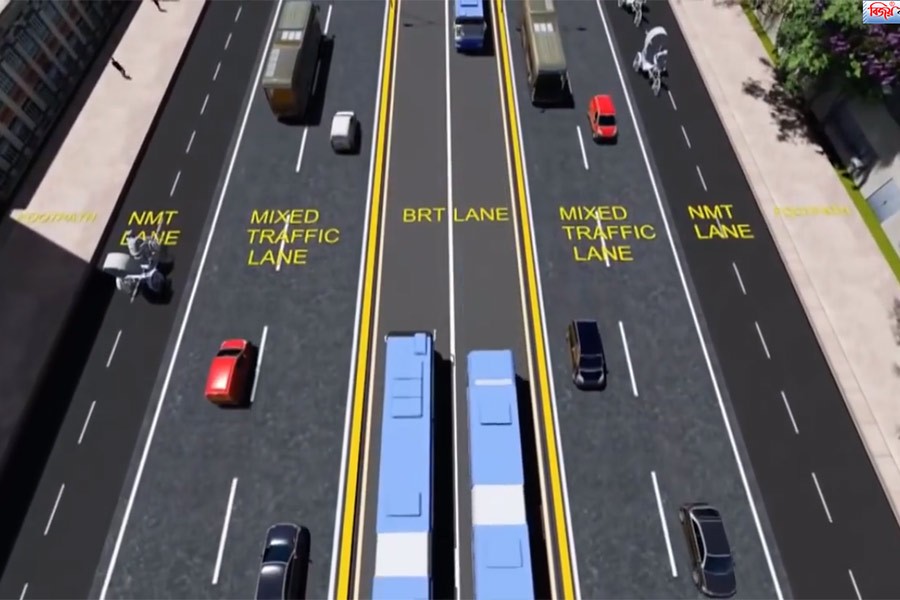
Published :
Updated :

The decision to introduce Bus Rapid Transit (BRT) system in Dhaka is one of the wrong steps to streamline the chaotic public transport in the capital city. What prompts the policymakers to go for such a costly and less-effective step is not known. Nevertheless, construction of Gazipur-Airport BRT corridor is underway with escalated cost. But, the Airport-Keraniganj BRT corridor has already become uncertain.
The concept of BRT was originated in Brazilian city Curitiba in the early 70s. The idea was to make bus service efficient by using dedicated lanes or corridors. Later many cities gradually adopted and implemented the BRT concept to enhance urban mobility. So far, 171 cities, mostly in Latin America, in the world are now providing BRT services covering around 6,000km distance in total.
As BRT requires dedicated corridor within the existing roads, it reduces the space for other vehicles. Dhaka is a city where land and space are at a premium and it is very challenging to provide chunks of road to one category of bus. So, to save space or to accommodate private and other traffic, it may compel to share some of its lane with other vehicles. This will reduce the effectiveness of BRT.
Moreover, BRT in Dhaka will definitely enhance the risk of road crossing for commuters at different stops as the corridor run in the middle of the road. Foot over-bridge or underground stairs are needed to connect the BRT stops with footpaths. Again, to make a return on very big investment, the fare of BRT buses will be significantly higher. It has already been argued that travel time will be reduced significantly as there will be no traffic congestion. In reality, congestion outside BRT corridor is likely to continue due to narrow road space.
A large section of the proposed BRT corridor is in parallel with Dhaka-Tongi rail line and also the Dhaka Elevated Express Way. The expressway route is Hazrat Shahjalal International Airport-Kuril-Banani-Mohakhali-Tejgaon-Moghbazar-Kamlapur-Saidabad-Jatrabari and Dhaka-Chittagong highway in Kutubkhali. It is difficult to understand how the Airport to Moghbazar section of BRT will operate smoothly having elevated expressway on the same route. Though the vehicles will run on raised infrastructure, construction of the expressway is going to reduce existing road space.
Again, there is also a move to construct a third railway track from Kamlapur to Joydevpur. It is also not sure how the extension of rail track will be functional in parallel with BRT. In fact, a third rail track will be more efficient than BRT if it is dedicated to frequent commuter trains and the stations are made easily accessible by employing feeder buses.
Instead of BRT, rearranging the existing bus routes with better buses and enhancing commuter trains at a lower cost will prove effective to reduce congestion and improve mobility of the people. Indian capital Delhi launched its first and only BRT in 2008 and dismantled it in 2016 due to wrong planning. Dhaka needs to review Delhi's lesson.
asjadulk@gmail.com


 For all latest news, follow The Financial Express Google News channel.
For all latest news, follow The Financial Express Google News channel.